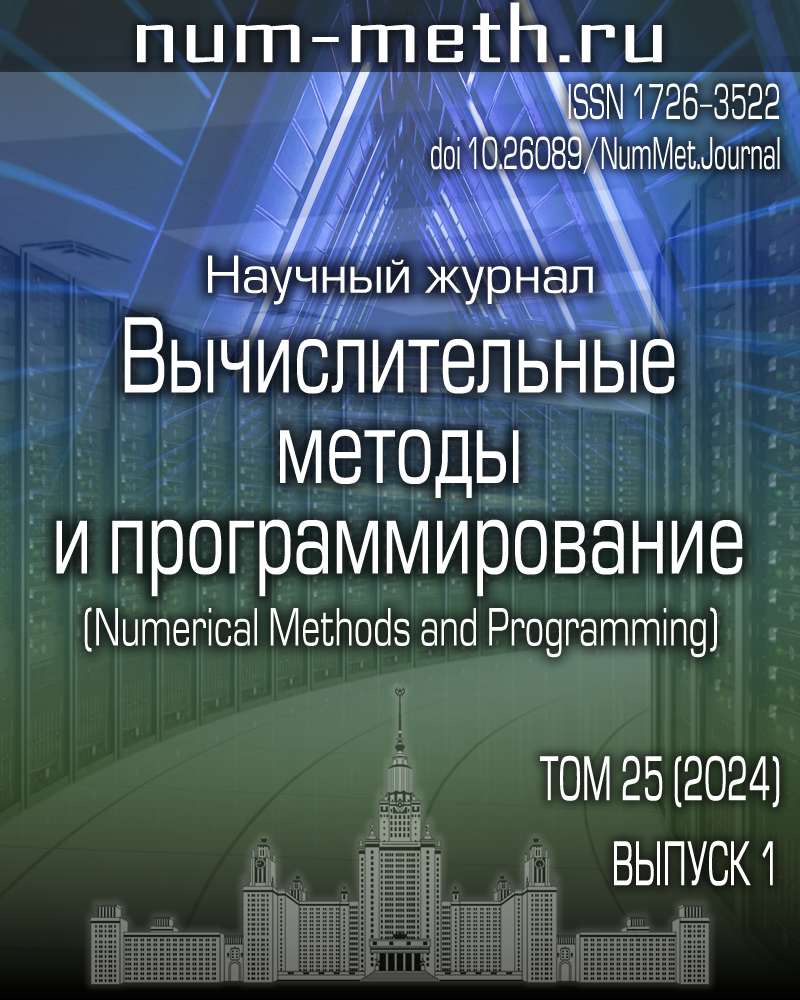|
|
Numerical methods and programming, 2009, Volume 10, Issue 1, Pages 132–140
(Mi vmp364)
|
 |
|
 |
This article is cited in 1 scientific paper (total in 1 paper)
Вычислительные методы и приложения
A study on efficiency of algorithms for calculating the flows bounded by moving solids and free surfaces implemented in FlowVision on distributed memory computers
A. A. Aksenova, A. A. Dyadkina, S. A. Kharchenkob
a TESIS Company
b Dorodnitsyn Computing Centre of the Russian Academy of Sciences, Moscow
Abstract:
At present, the modeling of unsteady motion of a liquid bounded by moving solid surfaces and contact discontinuities (free surfaces) is one of the typical CFD (computational fluid dynamics) problems. A general method for tracking the moving boundaries on the basis of Euler computational grids is implemented in FlowVision CFD software. The displacement of a solid or liquid boundary implies the destruction of old cells and the creation of new ones. In doing so, the total number of cells may substantially change. In addition, FlowVision automatically and dynamically adapts the mesh according to different adaptation criteria in the course of computations. This also changes both the topology and size of the mesh. The static decomposition of the mesh onto processors (performed only once at the start of computations) may imbalance multiprocessor computations and cause a loss of parallel efficiency during the displacement of boundaries and the adaptation of the mesh. On the other hand, the complete recalculation of the mesh decomposition may produce a substantial data migration between processors and, as a consequence, a significant deceleration of the simulation process. Thus, the problem of balancing the parallel computations on a changeable grid should be solved without a noticeable deceleration of the simulation. This paper describes how to efficiently circumvent the main difficulties of parallel implementation of the moving body and free surface technologies. The scalability of the proposed algorithms is studied for the problem of surfacing a submarine. The results demonstrate a high parallel efficiency of the algorithms implemented in FlowVision. The paper was
prepared on the basis of the authors' report at the International Conference
on Parallel Computing Technologies (PaVT-2009; http://agora.guru.ru/pavt2009).
Keywords:
moving body; free surface; systems of linear equations; parallel computations; domain decomposition; scalability.
Citation:
A. A. Aksenov, A. A. Dyadkin, S. A. Kharchenko, “A study on efficiency of algorithms for calculating the flows bounded by moving solids and free surfaces implemented in FlowVision on distributed memory computers”, Num. Meth. Prog., 10:1 (2009), 132–140
Linking options:
https://www.mathnet.ru/eng/vmp364 https://www.mathnet.ru/eng/vmp/v10/i1/p132
|

| Statistics & downloads: |
| Abstract page: | 112 | | Full-text PDF : | 40 |
|




 Contact us:
Contact us: Terms of Use
Terms of Use
 Registration to the website
Registration to the website Logotypes
Logotypes








 Citation in format
Citation in format 
